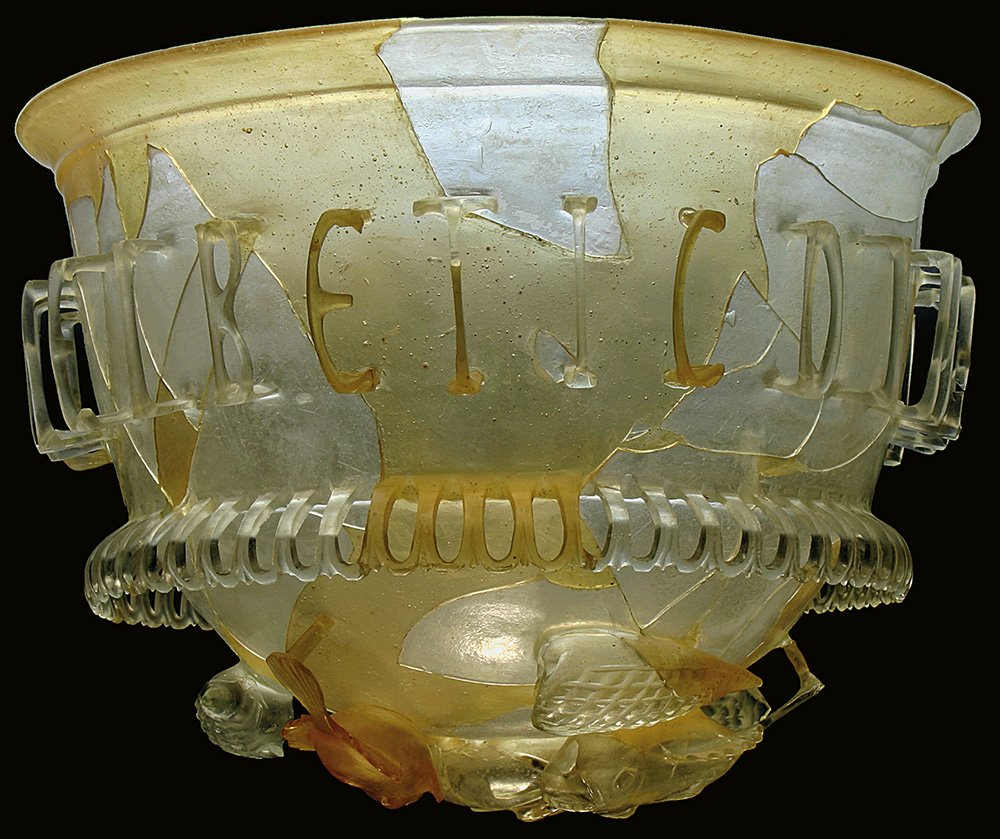January 2023 (127.1)
Article
The Late Roman Unfinished Chaîne opératoire: A New Approach to Inscribed Glass Openwork
Fragments of incomplete material objects, too often relegated to storage, have the potential to help uncover production processes that had been believed lost or thought permanently obscured. Traditionally, study of the chaîne opératoire (operational sequence) has been limited to completed pieces, excluding in-process and discarded items. This omission creates a misleading narrative. Rather than a linear process, the manufacture of sculpted objects is a multistep, protracted endeavor. Through an examination of unfinished carving among Late Roman glass openwork vessels (also known as diatreta or “cage cups”), highlighting in particular inscribed glass openwork vessels that were in process, this discussion offers a new approach building on previous scholarship. Unfinished carving is a rich and varied category of material culture that can, and should, be regarded as a valuable and even crucial complement to completed pieces. This freshly conceived archaeology of Roman experiments, mistakes, and fragments helps shed new light on—and even resolve—long-standing debates concerning these renowned works. This article demonstrates that expanding the chaîne opératoire to include the unfinished can enrich our understanding of craft production in the Late Roman world.

Glass openwork lamp with a stop mark and Greek inscription; ovolo frieze and fish and snails imagery at the base; early fourth century CE, decolorized glass, ht. 105 mm, rim diam. 165 mm, wall thickness not known, letter ht. 28 mm; excavated incomplete from a grave and restored in 1845. Budapest, Hungarian National Museum 23.1894.2; acq. 1894. (A. Dabasi; © Hungarian National Museum).

Glass openwork lamp with a stop mark and Greek inscription; ovolo frieze and fish and snails imagery at the base; early fourth century CE, decolorized glass, ht. 105 mm, rim diam. 165 mm, wall thickness not known, letter ht. 28 mm; excavated incomplete from a grave and restored in 1845. Budapest, Hungarian National Museum 23.1894.2; acq. 1894. (A. Dabasi; © Hungarian National Museum).